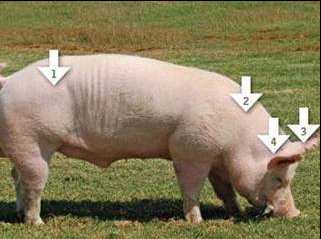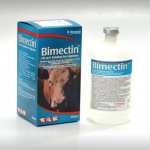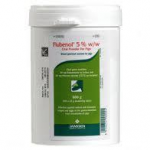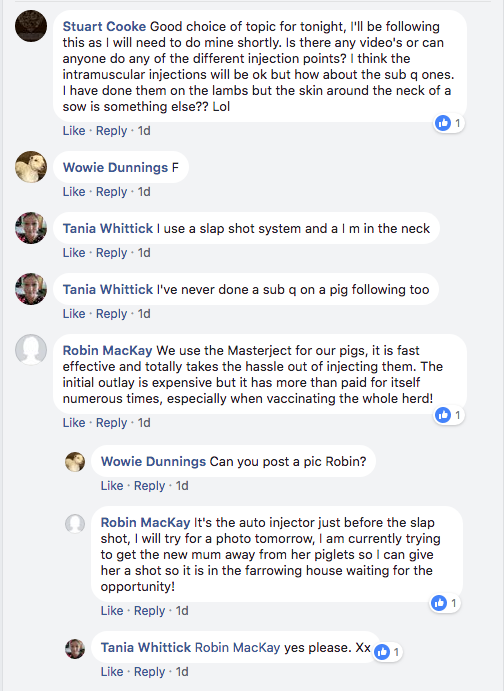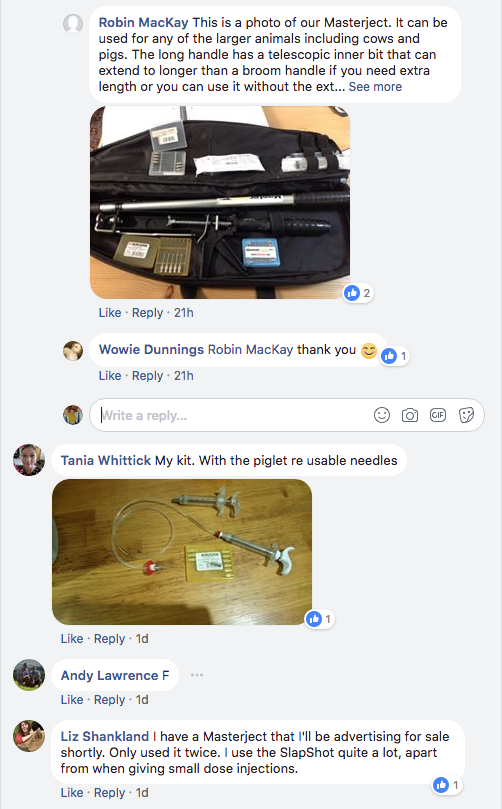What’s in your Cupboard ?
We all have medication for our pigs, but how should you handle them? Lets consider what and why. Our pigs cause us concern from time to time from not eating, limping, the odd lump appears, piglets having diahorrea, they get in to a little tussle with their fellow companions which can then result in minor scratches to a deep gouge. Then we are faced with the regular medication to ensure the health and well being of our pigs. But in all cases your first port of call is your vet.
At the same time we must be aware of Antimicrobial resistance (AMR) which is a resistance of a microorganism to an antimicrobial medicine to which it was originally sensitive. Resistant organisms (they include bacteria, fungi, viruses and some parasites) are able to withstand attack by antimicrobial medicines, such as antibiotics, antifungals, antivirals, and antimalarials, so that standard treatments become ineffective and infections persist increasing risk of spread to others. The evolution of resistant strains is a natural phenomenon that happens when microorganisms are exposed to antimicrobial drugs, and resistant traits can be exchanged between certain types of bacteria. The misuse of antimicrobial medicines accelerates this natural phenomenon. Poor infection control practices encourages the spread of AMR. (extract from AHDB Pork, meeting March 2015)
As you all know, from my posts and attending AHDB Pork meetings, important steps have already been taken to cut antibiotic use: the meat poultry industry almost halved its use of critically important antibiotics from 2012 to 2015 by improving training, stewardship, stockmanship and disease control. And again as we all know, AHDB Pork, the UK pig industry has launched a successful online system to record, benchmark and control antibiotic use, which already contains data for quite a few pigs.
All vaccines used in pigs have a shelf life and as biological products are susceptible to degeneration. Storage is normally required under refrigeration – without freezing – and in the dark. Never use products that are out of date or have not been stored correctly.
Each specific vaccine has a specific dose rate and administration protocol that must be followed if the vaccine is to be effective.
So what are we using and why
Erysipelas – Breeding animals should always be vaccinated for Erysipelas with a two dose primary course e.g. in the gilt, with booster doses given every five to six monthly intervals. Sows two weeks before farrowing. Don’t forget boars.
Growing pigs, where necessary, can be vaccinated from six weeks of age.
Erysipelas vaccine is also available in combination with Parvovirus vaccine for use in breeding animals. This combination can be used as one of the two primary doses for young gilts pre-mating and if necessary as the booster dose annually. (NB – turkeys and sheep are also susceptible to Erysipelas.)
PCVAD – Disease caused by Circovirus Type II can cause devastating losses in any size population and is controllable by vaccination. Two possible protocols are available:
Sow vaccine (Circovac). Similarly to E.coli/Clostridial vaccines, this is administered to breeding animals prior to farrowing to protect the young piglets via colostrum. Two doses with an interval of three to four weeks are needed, with the second dose two weeks prior to farrowing. (Gilts may also be vaccinated prior to service.) Single booster doses are required at least two weeks prior to each subsequent farrowing.
It should be noted that this vaccine comes in two parts, which must be reconstituted and used within three hours.
Piglet vaccine (Circoflex; Porcilis PCV) This is a single dose vaccine given to young piglets from two to three weeks of age (depending on the product) that protects growing pigs for four to five months (i.e. to slaughter weight). (In high challenge situations, two doses of one product (Porcilis PCV) are indicated but this is unlikely to be necessary in small populations.)
Some vaccines are available as specific combinations (e.g. Erysipelas/Parvovirus) but in some cases uncombined vaccines may be required at similar times. As a general rule, NEVER mix vaccines (unless specifically recommended) and do not apply simultaneously. This can be challenging if young piglets require several different vaccines and advice should be sought from your vets.
Most of us keep Pen & Strep, this treats infections caused by, or associated with organisms, sensitive to penicillin and/or streptomycin. It will therefore be effective in the treatment of infections caused by susceptible organisms including: Erysipelas; navel/joint ill; respiratory tract infections including pneumonia and atrophic rhinitis; listeriosis; meningitis; septicaemia; toxaemia associated with mastitis; urogenital tract infections; enteritis associated with Salmonella spp., salmonellosis; and the control of secondary bacterial invaders in diseases of primary viral origin.
Also, most of us keep Metacam, which contains the active substance meloxicam, which is used in non-infectious locomotor disorders (diseases that affect the ability to move) to reduce the symptoms of lameness and inflammation, for the relief of post-operative pain associated with minor soft tissue surgery such as castration, and for supportive therapy together with appropriate antibiotic therapy in the treatment of diseases that occur after farrowing such as puerperal septicaemia and toxaemia (mastitis-metritis-agalactia syndrome, a bacterial infection of the udder and/or the womb).
Worming.
Routine treatment of adult pigs should be carried out every six months, and if possible either moved to clean pasture or their accommodation steam cleaned.
Piglets at 8 weeks should be treated
Sows and gilts should be treated 7-14 days before farrowing.
Gilts should also be treated 7-14 days before going to the boar.
Which wormer
Ensure you make sure that you know the weight of your pigs so you can administer the correct dosage.
Some of you may use the following:
Doramectin 10mg/ml: Intramuscular injection at a rate of 1ml per 33kg. For all gastrointestinal round worms, lungworm, lice and mites. The product should be injected in the neck using 16-18gauge needle 2-2.5cm in length. Meat withdrawal: 56 days.
Ivermectin1%: Subcutaneous injection at a rate of 1ml per 33kg. For gastrointestinal round worms (except Trichuris) lice and mites. The product should be injected under the skin in the neck using 16-18 gauge needle ½” in length. Meat withdrawal: 28 days
Fenbendazole 100mg/ml: Oral preparation given at a rate of 0.5ml per 10kg divided over 7 days. For treatment of gastrointestinal round worms (except strongyloides) and lungworms. Can be given with food and/or diluted with water to increase volume. Meat withdrawal: 3days.
Dectomax injectable solution is for the treatment and control of gastrointestinal roundworms, lungworms, kidney worms, sucking lice and mange mites. Inject in the neck region using an 18 gauge x 1” needle for young animals; a 16 gauge x 1-1/2” needle for sows and boars. Piglets, use of a 20 gauge x 1” needle. Meat withdrawal: 24 days.
Bimectin injectable solution for the treatment and control of gastrointestinal roundworms, lungworms, lice and mange mites. The product should be given subcutaneously in the neck of pigs and given at a rate of 1ml per 33kg. Meat withdrawal: 28 days
Then there is needle length and size.
Intramuscular Liveweight kg Subcutaneous injections
Piglet 5/8″ 21g 1 – 7 Piglet 5/8 21g
Weaner 1″ 19g 7 – 25 Weaner 5/8″ 21g
Grower 1″ 19g 25 – 60 Grower 1/2″ 19g
Finisher 1″ 16g 60 – 100 Finisher 1/2″ 19g
Adult 1.5″ 16g ? Adult 1″ 19g
1. Always use a sharp new disposable needle each day
2. When injecting a group of healthy pigs do not use the same
needle for more than 10 – 12 pigs (one litter).
3. Never use a blunt needle
4. Needles must not go from a sick pig to a healthy pig
5. Only use a clean needle to draw out of a vaccine bottle
6. Dispose of used needles (and blades) in an appropriate bin
(some vets will dispose for you)
Then what applicators do we use. Some of use the normal syringe and needle, then there are the various gun applicators, the masterject auto injector and the slap shot we all have our preferences but in all cases keep them clean, safe and locked away.
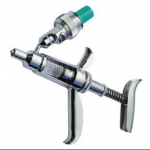
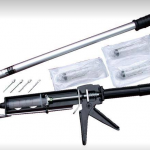
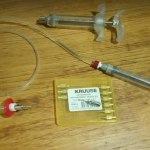
Don’t forget to speak to your vet first.
The following is a transcript from a recent discussion hosted by Tania Whittick on the subject
